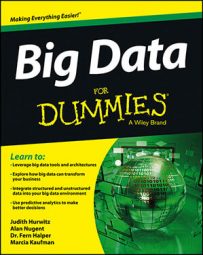Search engine innovators like Yahoo! and Google were faced with a bog data problem. They needed to find a way to make sense of the massive amounts of data that their engines were collecting. These companies needed to both understand what information they were gathering and how they could monetize that data to support their business model.
Hadoop was developed because it represented the most pragmatic way to allow companies to manage huge volumes of data easily. Hadoop allowed big problems to be broken down into smaller elements so that analysis could be done quickly and cost-effectively.
By breaking the big data problem into small pieces that could be processed in parallel, you can process the information and regroup the small pieces to present results.
Hadoop was originally built by a Yahoo! engineer named Doug Cutting and is now an open source project managed by the Apache Software Foundation. It is made available under the Apache License v2.0.
Hadoop is a fundamental building block in our desire to capture and process big data. Hadoop is designed to parallelize data processing across computing nodes to speed computations and hide latency. At its core, Hadoop has two primary components:
Hadoop Distributed File System: A reliable, high-bandwidth, low-cost, data storage cluster that facilitates the management of related files across machines.
MapReduce engine: A high-performance parallel/distributed data-processing implementation of the MapReduce algorithm.
Hadoop is designed to process huge amounts of structured and unstructured data (terabytes to petabytes) and is implemented on racks of commodity servers as a Hadoop cluster. Servers can be added or removed from the cluster dynamically because Hadoop is designed to be “self-healing.” In other words, Hadoop is able to detect changes, including failures, and adjust to those changes and continue to operate without interruption.

